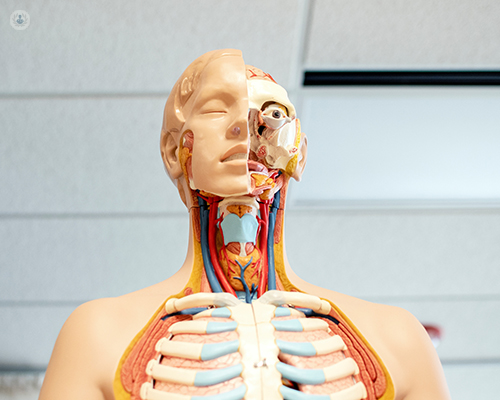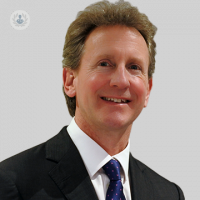Lump on your neck? Why you should see a doctor
Autore:As the neck is full of so many different structures, there are a great number of opportunities for a lump to develop. Neck lumps are fairly common and they can occur in any age group, and depending on which age group they happen in, this will often determine how seriously it should be treated. Mr Brian Fish is a leading otolaryngologist, and here he explains in detail how prevalent neck lumps are and why you should see a doctor if you have a lump on your neck.

When should I see a doctor about a lump in my neck?
The neck is full of structures, such as:
- Muscles
- Bones
- Cartilage
- Fat
- Glands (lymph glands, salivary glands, thyroid gland)
- Windpipe
- Voice box
- The gullet
All of these can become lumpy for one reason or another, which may be either benign or malignant. The general rule, if you have a neck lump, is that if it is associated with any difficulties in breathing, then you should get it seen to by a doctor immediately. Beyond that, if you have a neck lump that hasn't gone away within a couple of weeks, then you should go and get it seen by a doctor. If you have a lump that is rapidly increasing in size or painful, then you could see a doctor prior to the end of those two weeks.
The doctor will examine you and, depending on local arrangements, they will either send you for an ultrasound scan to further assess the lump, or they may send you to a neck lump clinic. In neck lump clinics, again, we will assess you and organise an ultrasound, and in most neck lump clinics, we would be able to organise an ultrasound on the same day as your initial assessment. When you have the ultrasound, depending on what the next lump looks like, you may well have a needle biopsy as well to help make the diagnosis.
How common are neck lumps?
Neck lumps can occur in any age group and are very common in general. How seriously you treat them depends, to an extent, on which age group they are in. In children, for example, 90% of neck lumps will be entirely benign and usually inflammatory in nature. If you have a child who gets tonsillitis, they will probably get enlarged lymph glands that resolve once the infection has all settled down. In adults, however, it is a slightly different picture.
In adults, I like to think of neck lumps in two groups:
- Thyroid lumps
Thyroid lumps usually occur in the central, lower part of the neck and they are very common. If you were to do an ultrasound scan of the general adult population, you would discover that about 50% of adults have a thyroid lump, and the proportion of these that are cancerous is very low.
- Neck lumps
Neck lumps tend to be found on the sides of the neck. Those over the size of 2cm in adults aged 35 years or more, 80% of these will be a tumour, and 80% of those tumours will be cancerous. These must be taken very seriously and treated accordingly. In fact, if we see a lateral neck lump in an adult aged 40 years or more, we will first assume that it is cancerous until we have proven otherwise.
If you are concerned about a lump in your neck, find an expert in neck lumps and make an appointment to have it checked.


